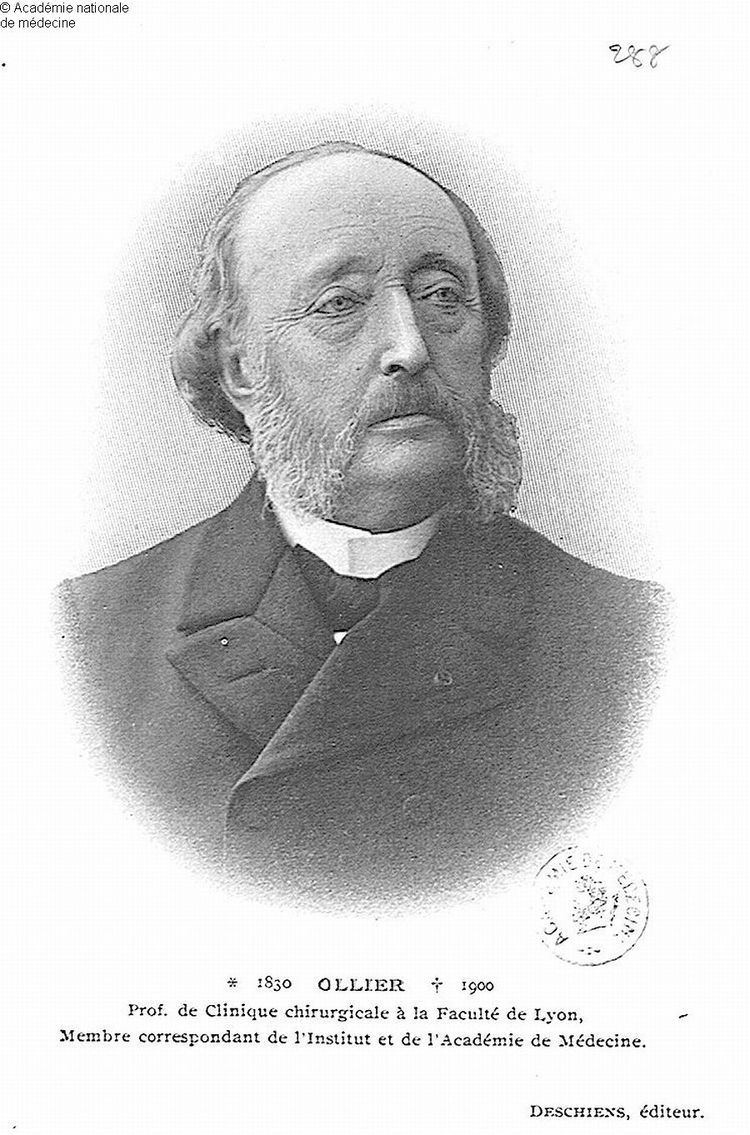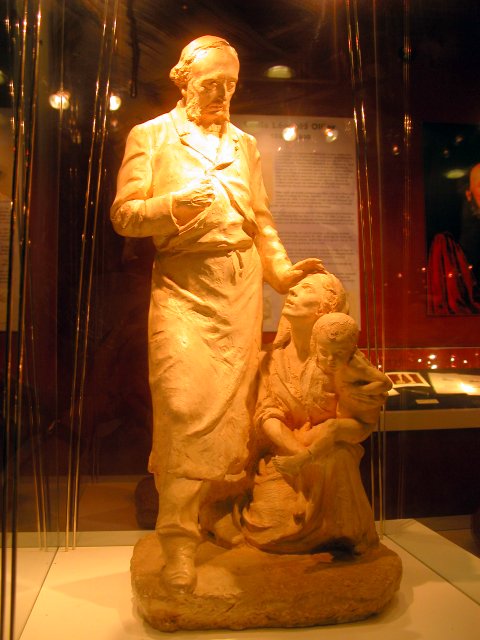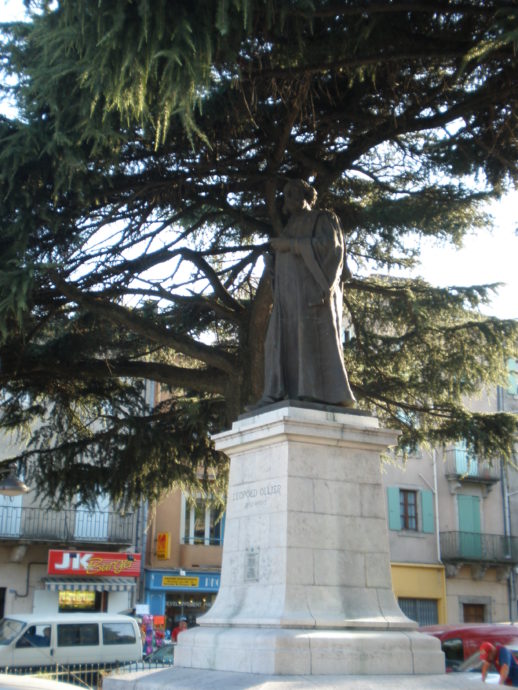by Theodore Dalrymple

The main square of the town that is nearest to my house in France, Les Vans, is called the Place Ollier, named after Léopold Ollier. This name will conjure up very little in the minds of 9,999 of 10,000 people, but Ollier was a great man, the most important orthopaedic surgeon of the 19th century: indeed one of the founders, if not the actual founder, of the discipline itself. It was he who discovered that bones grow and heal from the periosteum, and this discovery permitted him to perform the first bone grafts. He developed various surgical instruments, adopted Lister’s antisepsis (that revolutionised surgical results) very early, and was the first to describe a disease that was afterwards named for him, Ollier’s Disease, the growth of cartilage within bones where it should not be that sometimes leads to pathological fractures.
In the small museum devoted to his life and work in Les Vans, there is a statuette of Ollier, standing upright, dressed in a surgical apron of his time, his hand on a mother’s head who is crouching at his feet, holding a small child. It is clear that Ollier is a ministering angel, and the mother is in a worshipful or supplicatory pose.

This might seem like typical Victorian hero-worship until you look at the pictures of what Ollier actually did. Deformities tended to be more horrible and dramatic in his time than in ours, and his new techniques permitted restoration if not to normal, at least to function and the possibility of some semblance of active life. It is scarcely surprising that people were willing to kiss the hem of his coat.
In the Place Ollier there is a large and grand bronze statue to commemorate Les Vans’ greatest son. It was erected in 1905, thanks to a worldwide subscription, and was created by Jean Boucher, one of the foremost creators of monuments of his time. There were two copies, the one in Les Vans, and the one in the Place Ollier in Lyon (where Ollier practised and was a professor).

This latter copy was removed by the Germans during the Occupation and melted down to assist with the war efforts of the Wehrmacht, and so exists no longer. One wonders how long the statue in Les Vans will avoid a similar fate.
In the first place, not only was Ollier clearly a paternalist, but the statue itself is hero-worshipping in nature, several times life-size and clearly intended to impress lesser mortals such as ourselves. It takes the great-man view of history, which as we know to be false because it is desired by enlightened persons to be false.
But there is far worse than this to be said about it. Ollier took the view that the great French physiologist Claude Bernard propounded, namely that medicine should be founded upon experimental science, which required vivisection, and Ollier was himself an experimental scientist of note.
This brings us to the means by which he discovered that the inner surface of the periosteum is the source of bone growth: he performed a large series of experiments on rabbits and chickens. For example, he would take a strip of periosteum from the tibia of a rabbit and place it under the skin of the rabbit’s head. Before long, there would be a bony growth evident there, proved not by feel alone but histologically.
Almost needless to say, Ollier proceeded to experiment with bone grafts in animals before he tried them on humans. It is very difficult to believe that all his experiments were other than very painful for his rabbits and chickens, indeed that their suffering was not intense.
So what at first sight appears to be a statue to a beneficiary of mankind is in fact a statue to a man who tortured animals, an uncompromising vivisector. It is no defence of him to say that his experiments which inflicted so much suffering eventually led to a reduction in much human suffering, because he could not have known in advance that they would. After all, it is probable that far more experiments have been performed on animals that cause them suffering without resulting in any reduction of human suffering that that have resulted in such a reduction.
Moreover, by what right does Man, proud Man, inflict suffering on the lower animals for his own benefit? Let him inflict suffering on himself, that is to say volunteers, if he likes, but leave rabbits alone.
All this could, and indeed has been, said, antivivisectionism having been one of the great social movements of late Victorian Britain, for example. The modern equivalent has been the animal rights’ movement of the second half of the 20th century, a movement that has been very successful in removal of the display of fur coats from the streets of Britain. Animal rights activists have “liberated” minks from mink farms to the great detriment of the local wildlife; they have released mice that have been interbred for decades in laboratories so as to produce genetically identical creatures for experiment. The neuroscientist, Colin Blakemore, was for years the object of harassment and threat (his daughter had to be escorted to school by the police, so real were the threats of kidnap by animal rights activists). No one should underestimate in this age of serial monomanias the mobilising potential of the cause.
Ollier is probably safe on his plinth in Les Vans, however: but not because the potential iconoclasts understand and respect the great labour, devotion and ingenuity it takes to go from ignorance to knowledge, that is to say the great work that he did. On the contrary, they almost certainly take for granted the technique of bone grafting should they ever need it, as if Man had been born with innate knowledge of it and therefore had no need to discover or develop it. This, of course, would mean that the suffering that Ollier must have inflicted on his experimental animals was unnecessary, and all the worse for being so. The one thing that young people brought up on the pieties of multiculturalism cannot do is to imagine themselves into a position other than their own, for example what it is like not to know that the periosteum is the source of growth in bone, and therefore not to know that bone can be grafted. By contrast, they can easily imagine the suffering of Ollier’s rabbits and chickens, and therefore conclude that Ollier, far from being a benefactor of Mankind, was a sadistic monster to whom no statute should be erected.
But as I have said, he is probably on his plinth safe because, Les Vans being a small, obscure and remote town, has not the weight of self-righteous semi-educated young people in it to form a fascistic mob to pull down, even to deface, so solid a monument to human greatness.
First published in the Library of Law and Liberty.
- Like
- Digg
- Del
- Tumblr
- VKontakte
- Buffer
- Love This
- Odnoklassniki
- Meneame
- Blogger
- Amazon
- Yahoo Mail
- Gmail
- AOL
- Newsvine
- HackerNews
- Evernote
- MySpace
- Mail.ru
- Viadeo
- Line
- Comments
- Yummly
- SMS
- Viber
- Telegram
- Subscribe
- Skype
- Facebook Messenger
- Kakao
- LiveJournal
- Yammer
- Edgar
- Fintel
- Mix
- Instapaper
- Copy Link








